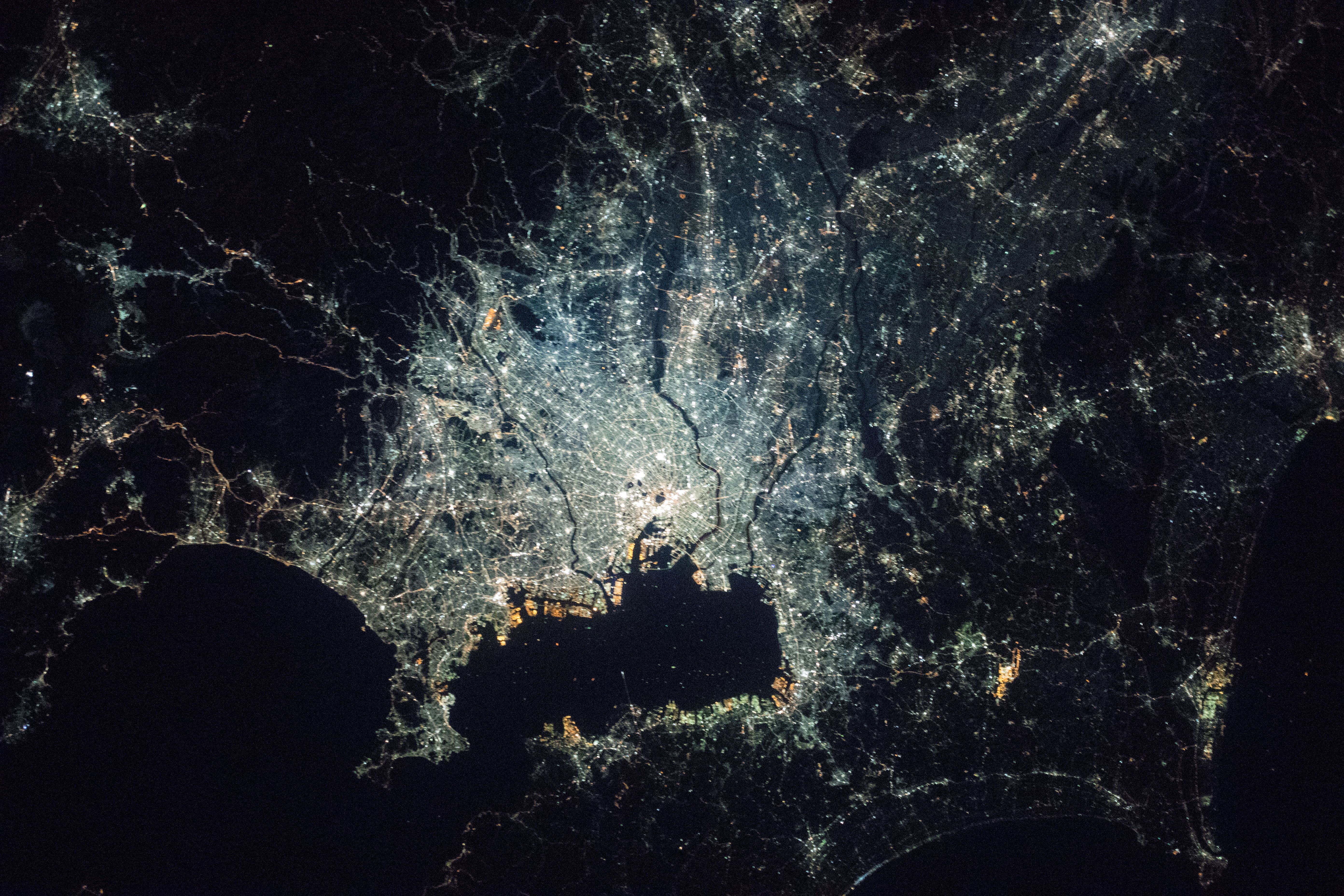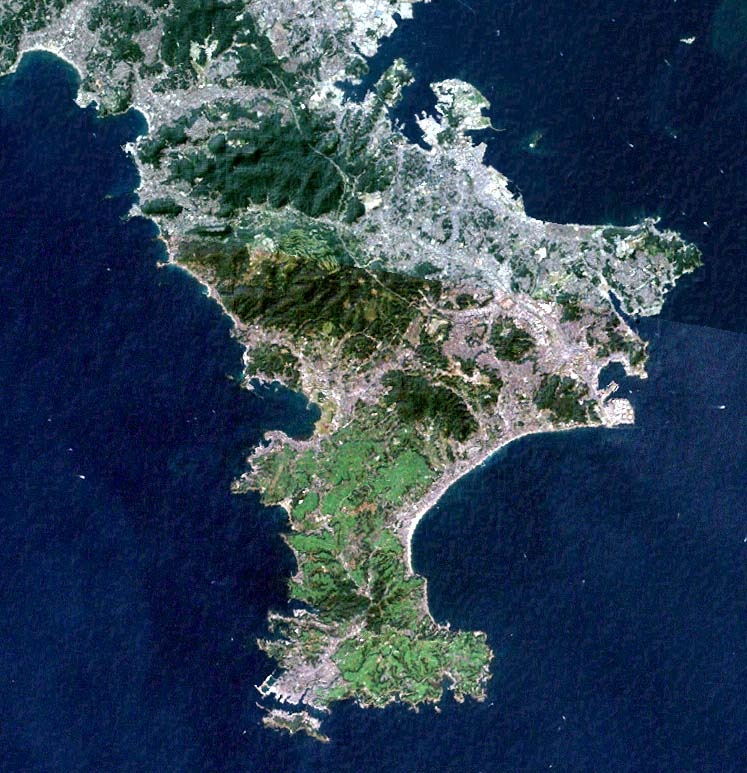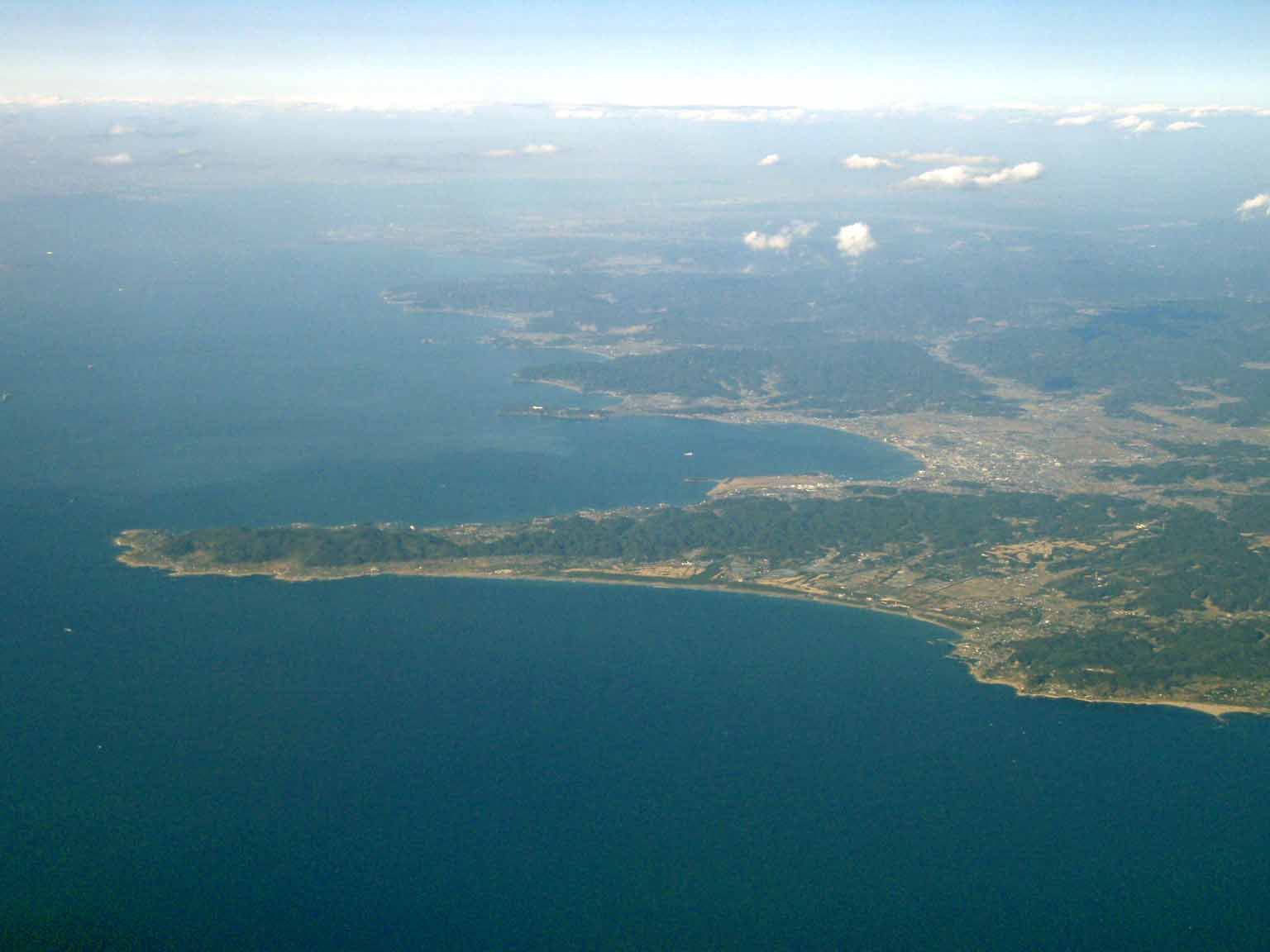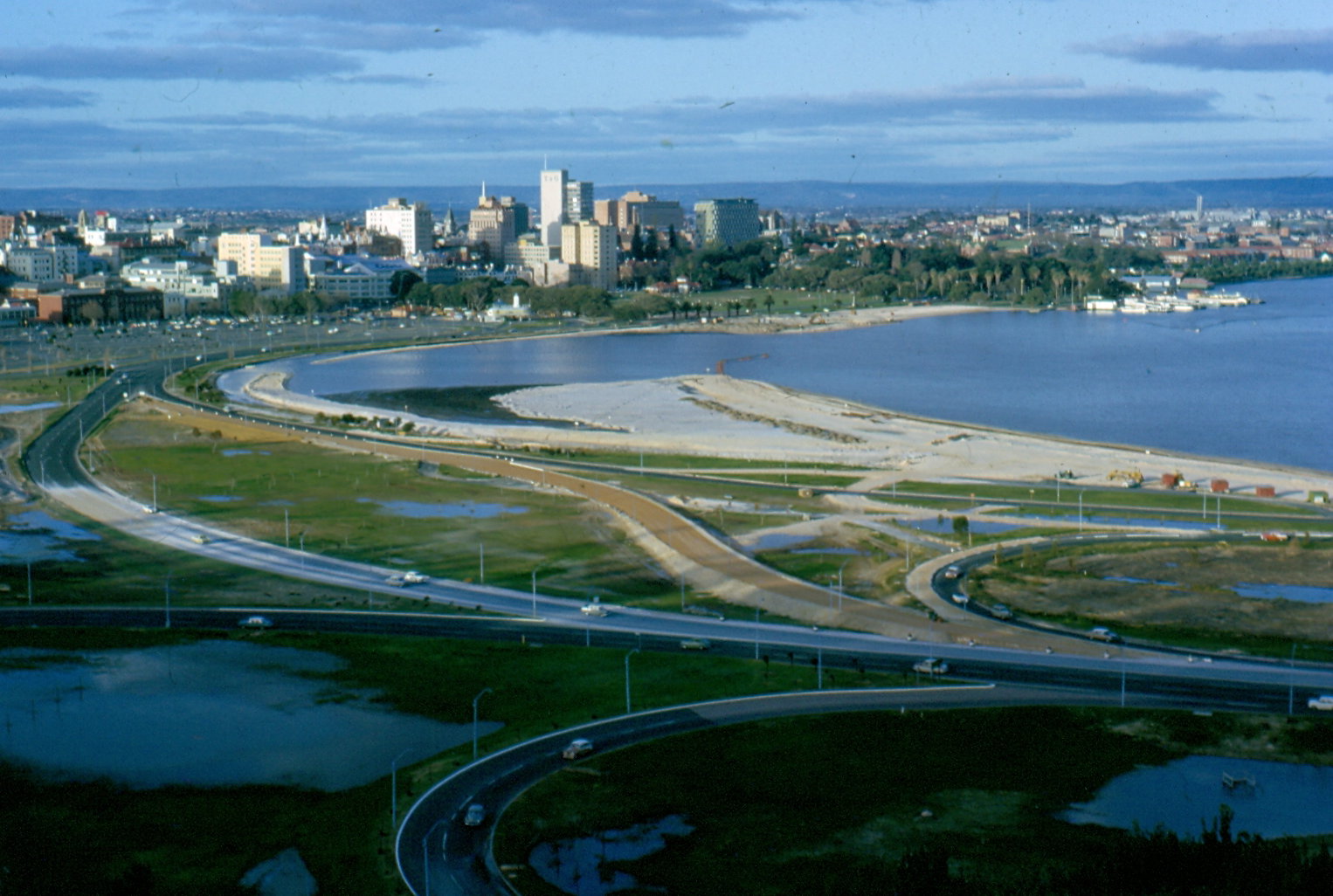|
Tokyo Bay
is a bay located in the southern Kantō region of Japan spanning the coasts of Tokyo, Kanagawa Prefecture, and Chiba Prefecture, on the southern coast of the island of Honshu. Tokyo Bay is connected to the Pacific Ocean by the Uraga Channel. The Tokyo Bay region is the most populous and the largest industrialized area in Japan. Names In ancient times, the Japanese knew Tokyo Bay as the . By the Azuchi–Momoyama period (1568–1600) the area had become known as after the city of Edo. The bay took its present name in modern times, after the Imperial court moved to Edo and renamed the city Tokyo in 1868. Geography Tokyo Bay juts prominently into the Kantō Plain. It is surrounded by the Bōsō Peninsula in Chiba Prefecture to the east and the Miura Peninsula in Kanagawa Prefecture to the west. The shore of Tokyo Bay consists of a Diluvium, diluvial plateau and is subject to rapid marine erosion. Sediments on the shore of the bay make for a smooth, continuous shoreline. Bound ... [...More Info...] [...Related Items...] OR: [Wikipedia] [Google] [Baidu] |
Honshu
, historically known as , is the largest of the four main islands of Japan. It lies between the Pacific Ocean (east) and the Sea of Japan (west). It is the list of islands by area, seventh-largest island in the world, and the list of islands by population, second-most populous after the list of islands of Indonesia, Indonesian island of Java. Honshu had a population of 104 million , constituting 81.3% of the entire population of Japan, and mostly concentrated in the coastal areas and plains. Approximately 30% of the total population resides in the Greater Tokyo Area on the Kantō Plain. As the historical center of Japanese cultural and political power, the island includes several past Japanese capitals, including Kyoto, Kyōto, Nara (city), Nara, and Kamakura. Much of the island's southern shore forms part of the Taiheiyō Belt, a megalopolis that spans several of the Japanese islands. Honshu also contains Japan's highest mountain, Mount Fuji, and its largest lake, Lake Biwa. Mo ... [...More Info...] [...Related Items...] OR: [Wikipedia] [Google] [Baidu] |
Miura Peninsula
is a peninsula located in Kanagawa, Japan. It lies south of Yokohama and Tokyo and divides Tokyo Bay, to the east, from Sagami Bay, to the west. Cities and towns on the Miura Peninsula include Yokosuka, Miura, Hayama, Zushi, and Kamakura. The northern limit of the peninsula runs from Koshigoe, Kamakura in the west, across to Mt. Enkai, in the southern wards of Yokohama in the east, overlooking Tokyo Bay. Overview The peninsula is a bedroom community for those who work in Tokyo and a popular tourist destination for people from Tokyo. It is also an important area for Japan's self-defense, with the eastern side hosting the National Defense Academy of Japan and the Yokosuka Naval Base, serving both the Japanese Maritime Self Defence Force and the United States Seventh Fleet. A significant portion of Tokyo's electricity is generated at Tokyo Electric's power station A power station, also referred to as a power plant and sometimes generating station or generating pl ... [...More Info...] [...Related Items...] OR: [Wikipedia] [Google] [Baidu] |
Yokohama, Kanagawa
is the second-largest city in Japan by population as well as by area, and the country's most populous municipality. It is the capital and most populous city in Kanagawa Prefecture, with a population of 3.7 million in 2023. It lies on Tokyo Bay, south of Tokyo, in the Kantō region of the main island of Honshu. Yokohama is also the major economic, cultural, and commercial hub of the Greater Tokyo Area along the Keihin Industrial Zone. Yokohama was one of the cities to open for trade with the West following the 1859 end of the policy of seclusion and has since been known as a cosmopolitan port city, after Kobe opened in 1853. Yokohama is the home of many Japan's firsts in the Meiji period, including the first foreign trading port and Chinatown (1859), European-style sport venues (1860s), English-language newspaper (1861), confectionery and beer manufacturing (1865), daily newspaper (1870), gas-powered street lamps (1870s), railway station (1872), and power plant (1882). Yoko ... [...More Info...] [...Related Items...] OR: [Wikipedia] [Google] [Baidu] |
Cape Honmaku
A cape is a clothing accessory or a sleeveless outer garment of any length that hangs loosely and connects either at the neck or shoulders. They usually cover the back, shoulders, and arms. They come in a variety of styles and have been used throughout history for many different reasons. Semantic distinction In fashion, the word "cape" usually refers to a shorter garment and "cloak" to a full-length version of the different types of garment, though the two terms are sometimes used synonymously for full-length coverings. A shoulder cape is thus sometimes called a "capelet". The fashion cape does not cover the front to any appreciable degree. In raingear, a cape is usually a long and roomy protective garment worn to keep one dry in the rain. History The first known usage of capes is unknown, but some early references we know of are from Ancient Roman military uniforms. Later on, capes were common in medieval Europe, especially when combined with a hood in the chaperon. They ... [...More Info...] [...Related Items...] OR: [Wikipedia] [Google] [Baidu] |
Shoal
In oceanography, geomorphology, and Earth science, geoscience, a shoal is a natural submerged ridge, bank (geography), bank, or bar that consists of, or is covered by, sand or other unconsolidated material, and rises from the bed of a body of water close to the surface or above it, which poses a danger to navigation. Shoals are also known as sandbanks, sandbars, or gravelbars. Two or more shoals that are either separated by shared crest and trough, troughs or interconnected by past or present sedimentary and hydrographic processes are referred to as a shoal complex.Neuendorf, K.K.E., J.P. Mehl Jr., and J.A. Jackson, eds. (2005) ''Glossary of Geology'' (5th ed.). Alexandria, Virginia, American Geological Institute. 779 pp. The term ''shoal'' is also used in a number of ways that can be either similar to, or quite different from, how it is used in geologic, geomorphic, and oceanographic literature. Sometimes, the term refers to either any relatively shallow place in a stream ... [...More Info...] [...Related Items...] OR: [Wikipedia] [Google] [Baidu] |
Cape Sunosaki
is a cape on the Pacific Ocean, in the city of Tateyama, Chiba Prefecture, Japan. The cape is located at the southwestern point of Bōsō Peninsula on the island of Honshu, and marks the point between the inner and outer parts of the peninsula. History Cape Sunosaki was well known throughout Japanese history due to its strategic position. The Genpei Jōsuiki, the expanded version of the Heike Monogatari written in the 13th century, mentions a failed invasion of Cape Suno, in what was then Awa Province. Minamoto no Yoshitsune's gunki monogatari ("war-tale"), the '' Gikeiki'', probably written in the Nanboku-chō period, mentions the landing of a boat party on Cape Sunosaki. Geography Cape Sunosaki is a coastal terrace made of layers of mudstone dating to the Tertiary period. Cape Sunosaki, together with on the southeast part of the Miura Peninsula in Miura, Kanagawa Prefecture, face the Uraga Channel that connects Tokyo Bay to the Sagami Gulf, and ultimately the Pa ... [...More Info...] [...Related Items...] OR: [Wikipedia] [Google] [Baidu] |
Cape Tsurugisaki
A cape is a clothing accessory or a sleeveless outer garment of any length that hangs loosely and connects either at the neck or shoulders. They usually cover the back, shoulders, and arms. They come in a variety of styles and have been used throughout history for many different reasons. Semantic distinction In fashion, the word "cape" usually refers to a shorter garment and "cloak" to a full-length version of the different types of garment, though the two terms are sometimes used synonymously for full-length coverings. A shoulder cape is thus sometimes called a "capelet". The fashion cape does not cover the front to any appreciable degree. In raingear, a cape is usually a long and roomy protective garment worn to keep one dry in the rain. History The first known usage of capes is unknown, but some early references we know of are from Ancient Roman military uniforms. Later on, capes were common in medieval Europe, especially when combined with a hood in the chaperon. They ... [...More Info...] [...Related Items...] OR: [Wikipedia] [Google] [Baidu] |
Land Reclamation
Land reclamation, often known as reclamation, and also known as land fill (not to be confused with a waste landfill), is the process of creating new Terrestrial ecoregion, land from oceans, list of seas, seas, Stream bed, riverbeds or lake beds. The land reclaimed is known as reclamation ground, reclaimed land, or land fill. History In ancient Egypt, the rulers of the Twelfth Dynasty of Egypt, Twelfth Dynasty (c. 2000–1800 BC) undertook a far-sighted land reclamation scheme to increase agricultural output. They constructed levees and canals to connect the Faiyum Oasis, Faiyum with the Bahr Yussef waterway, diverting water that would have flowed into Lake Moeris and causing gradual evaporation around the lake's edges, creating new farmland from the reclaimed land. A similar land reclamation system using dams and drainage canals was used in the Greek Lake Copais, Copaic Basin during the Middle Helladic period, Middle Helladic Period (c. 1900–1600 BC). Another early large-s ... [...More Info...] [...Related Items...] OR: [Wikipedia] [Google] [Baidu] |
Cape Futtsu
is a cape located east of Tokyo Bay in Futtsu, Chiba, Japan. The entire area in the cape has been developed as Chiba Prefectural Futtsu Park, and has been selected as one of Japan's Top 100 White Sand and Green Pines and one of Kanto's Top 100 Views of Fuji. Futtsu Tidal Flat on the north side of Cape Futtsu is included in Japan's 500 important wetlands. Geography Cape Fuutsu is a cape that juts out from near the mouth of the Koito River toward Tokyo Bay for approximately in the southwest direction. It consists of a long, narrow sandbar called Futtsusu that stretches from the mouth of the Koito River to the tip of the cape, and a triangular alluvial plain called Futtsuheiya that stretches from there to Isonezaki. Off the tip of the sandbar are the First Sea Fort and the Second Sea Fort (artificial islands), which were used as forts. Along with Cape Kannon on the Miura Peninsula on the opposite shore, which is about away, Cape Futtsu forms the boundary between Tokyo Bay and t ... [...More Info...] [...Related Items...] OR: [Wikipedia] [Google] [Baidu] |
Cape Kannon (Kanagawa, Japan)
Cape Kannon (, ) is a Cape (geography), cape at the easternmost point of the Miura Peninsula, which divides Tokyo Bay from the Pacific Ocean. It is on a rocky coast where the Kannonzaki Lighthouse, Japan's first modern lighthouse (after two reconstructions) stands, and faces the Uraga Channel, Japan's busiest sea lane. Cape Kannon is located 3 kilometers east from Uraga Station of Keikyu Main Line railway. It is now part of Kannonzaki Park. Visitors to the Cape Kannon area can enjoy ship watching. (in Japanese) It is perhaps best known as the spot where Lemuel Gulliver, the central character of the 1726 book ''Gulliver's Travels'', landed in Japan in volume 3. It is ... [...More Info...] [...Related Items...] OR: [Wikipedia] [Google] [Baidu] |
Erosion
Erosion is the action of surface processes (such as Surface runoff, water flow or wind) that removes soil, Rock (geology), rock, or dissolved material from one location on the Earth's crust#Crust, Earth's crust and then sediment transport, transports it to another location where it is deposit (geology), deposited. Erosion is distinct from weathering which involves no movement. Removal of rock or soil as clastic sediment is referred to as ''physical'' or ''mechanical'' erosion; this contrasts with ''chemical'' erosion, where soil or rock material is removed from an area by Solvation, dissolution. Eroded sediment or solutes may be transported just a few millimetres, or for thousands of kilometres. Agents of erosion include rainfall; bedrock wear in rivers; coastal erosion by the sea and Wind wave, waves; glacier, glacial Plucking (glaciation), plucking, Abrasion (geology), abrasion, and scour; areal flooding; Aeolian processes, wind abrasion; groundwater processes; and Mass wastin ... [...More Info...] [...Related Items...] OR: [Wikipedia] [Google] [Baidu] |







